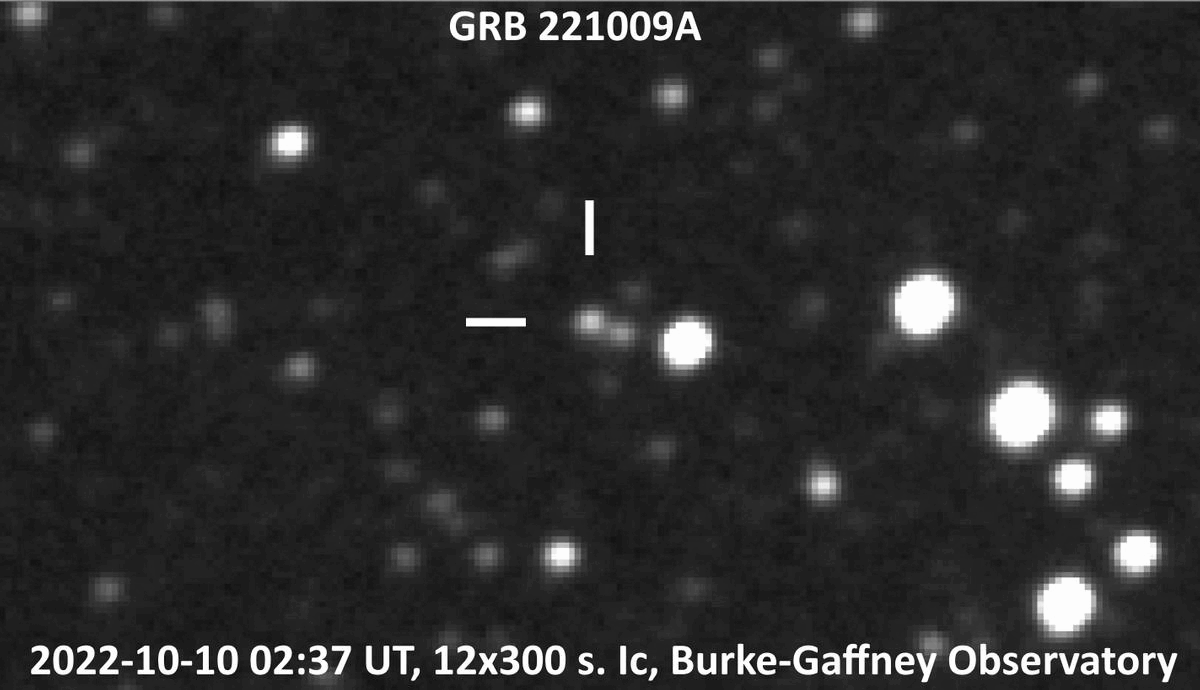
High Energy Network Observing Section
Section Leader: Dave Hinzel Contact
Interested in joining this section? Click here for instructions.
Watch the High Energy Network Observing Section Videos

The AAVSO International High Energy Network is dedicated to the optical monitoring of high energy astrophysical phenomena in the universe. It is an expansion of the AAVSO International Gamma-Ray Burst Network which had great success in discovering and observing the optical afterglows of gamma-ray bursts (GRBs). Observers around the world are able to respond in seconds or minutes to burst alerts sent by satellite, and are able to catch these rapidly evolving phenomena as quickly (if not more so) than professional observatories. The AAVSO still distributes GCN Notices and GCN Circulars, but the work of the High Energy Network is largely done as opportunities for new observations and targets arise. Several observers continue to pursue gamma ray bursts, and AAVSO staff collaborate with them to publish their results and pursue follow-up observations.

Today, AAVSO observers pursuing high energy sources go beyond gamma-ray burst follow-ups to include observations of other astrophysical sources bright in gamma- and X-rays. These include Blazars and other Active Galactic Nuclei, and Galactic gamma-ray sources like flare stars and X-ray binaries. The AAVSO International High Energy Network is a truly international endeavor, with observers from around the world actively conducting GRB follow-ups and participating in HEN campaigns. We invite researchers into high-energy phenomena to collaborate with AAVSO observers via Observing Campaigns on their sources of interest.
The AAVSO International High Energy Network activities are currently funded via the AAVSO Endowment Fund. We are grateful for past support by the Curry Foundation, NASA Marshall Space Flight Center, NASA Center for Space Science, Sonoma State University, and the many observers and AAVSO members world-wide who have contributed their time and observations.
General Overview
The AAVSO International High Energy Network came about as an evolution of the AAVSO International GRB Network. The GRB Network was established at the First High Energy Workshop for Amateur Astronomers in April, 2000. The GRB network was a great success, detecting many GRB afterglows and discovering a few on our own. The follow-up of GRB optical afterglows continues to be a major focus of the Network today.
A second follow-up workshop was held in July, 2002. Shortly after this workshop the AAVSO entered into a relationship with the Global Telescope Network at Sonoma State University to observe blazars. Many of the observing techniques and procedures developed for afterglow observing also applied to this new blazar project. We also began monitoring polars in support of the XMM-Newton satellite mission. All of these new projects led to a natural evolution of the GRB network into the broader High Energy Network in the spring of 2003.
In 2005, we held the Third High-Energy Workshop during the 94th Spring Meeting of the AAVSO in Las Cruces, New Mexico. This meeting was held in collaboration with New Mexico State University, Sonoma State University, NASA's Swift and GLAST (aka Fermi Gamma-Ray Space Telescope) satellites, and the NASA Marshall Space Flight Center, and was supported in part by the Curry Foundation. The Workshop covered both science and education topics (DVDs of the presentations are available from the AAVSO.) Since 2005, the AAVSO International High Energy Network has continued to pursue gamma-ray bursts, blazars, polars, and other high-energy astrophysical phenomena, both in collaboration with professional researchers requesting our help, and as independent research programs by Network observers and AAVSO Headquarters.
Members and observers of the AAVSO International High Energy Network are among the most experienced visual and CCD observers. They have been trained through many workshops and thanks to the tireless effort of professional mentors and advisors. The network has truly global coverage of the sky and high enthusiasm. The AAVSO currently redistributes GCN Notices from Swift, INTEGRAL, AGILE and Fermi Gamma-Ray Space Telescope missions to over 250 observers worldwide.


